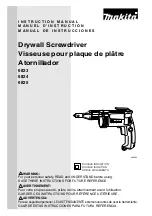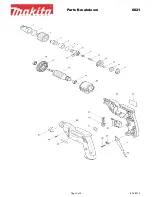
12
operational amplifier, U5A. This op-amp compares the forward power signal (from the
directional coupler board) to that of the DC reference signal applied to the non-inverting input.
The reference level is set either from the front panel potentiometer or from Pin 5 of the J1
connector.
When the reference is applied to the U5A, it drives the gain control transistor Q4, until the
squared forward power signal from the directional coupler is equal to the inverting input to the
op-amp provided by the reference. When the inverting signal equals the reference voltage on
the non-inverting input, the drive level holds constant.
The non-inverting input is the connection point for the protection circuits. The OCMA pulls
this point down when the load conditions force the amplifiers near their over-voltage, or over-
current limits. This limits the drive to the amplifiers until the match between the generator and
the load is corrected.
The reflected power limiter performs in the same way. When the signal from the reflected
power detector in the directional coupler reaches a pre-set limit, the U5B amplifier pulls -down
the reference line until the VSWR conditions are within safe limits.
The oscillator control board also includes linearizing circuitry, allowing both forward and
reflected analog power level signals to appear at connector J1 as linear representations of the
forward and reflected RF output power. Two squaring ICs (U2 and U4) are used to condition
the square law signals from the directional coupler.
Typical Specifications
(OCB)
Output load impedance
50 ohms
Output RF power level
1 watt (max)
Input power
Pin 10
+15 VDC at 170 mA max
Pin 8
-15 VDC at 24 mA max
Remote power control input impedance
Pin 5 on J1
2 K ohm typical
Reflected power limit
Internally set to 200W reflected
C. Driver (schem dwg# FA0207R2)
The CPS-1001 driver consists of a two transistor “Class C” power amplifier stage. The output
stage of the driver feeds a splitter. The split signals are then used to feed the final power
amplifiers. With an input of 1.8 watts, a typical output would be 25 watts x2.
Typical Specifications
(Driver)
Gain
50 ohms
Input power
1.5 watts (max)
Output RF power
25 watts
Driver Voltage*
42 VDC
Driver Current*
3.5 A
AC input
208 V
* 1000 watts into 50 ohm resistive load
Summary of Contents for CPS-1001/S/13.56MHZ
Page 18: ...17 ...




































